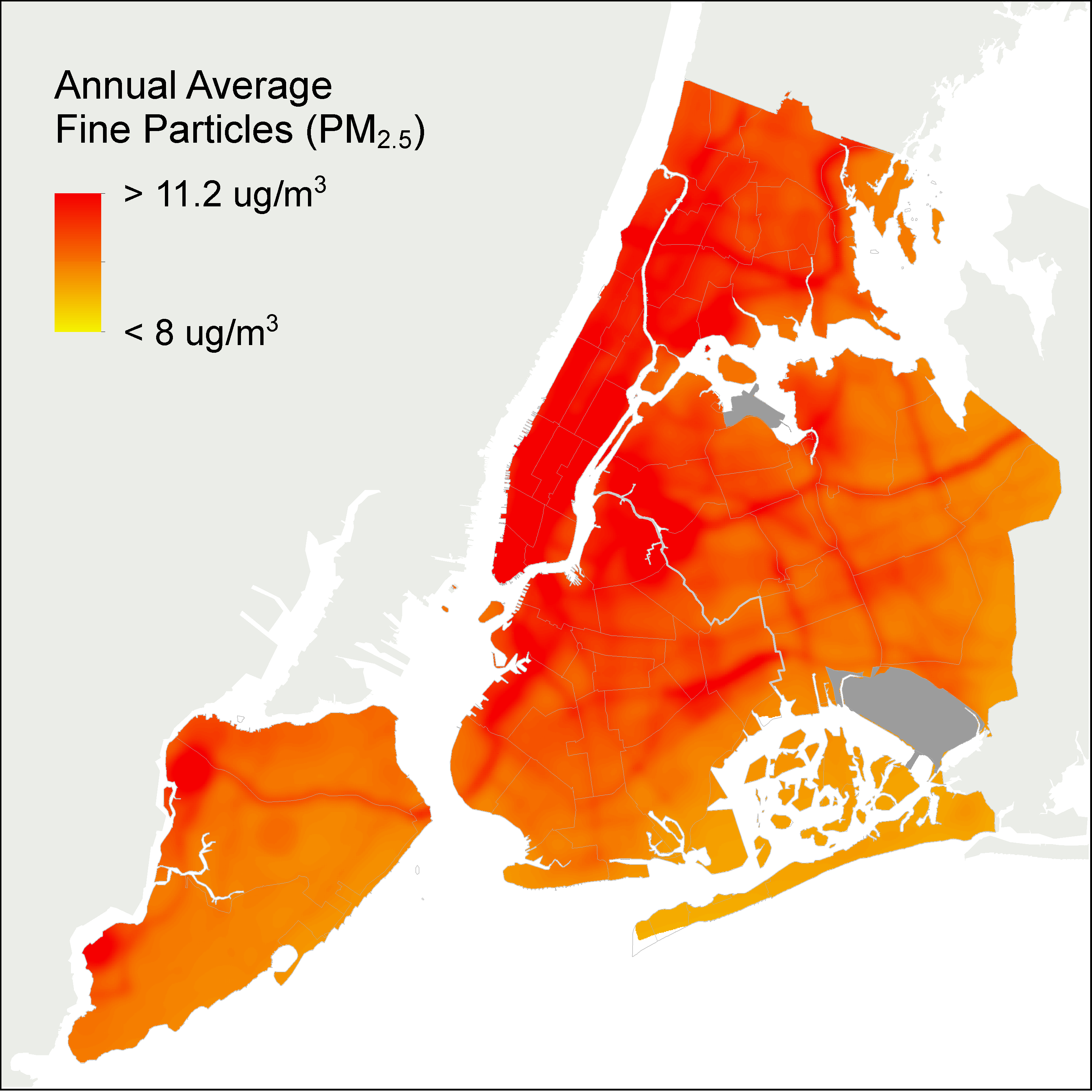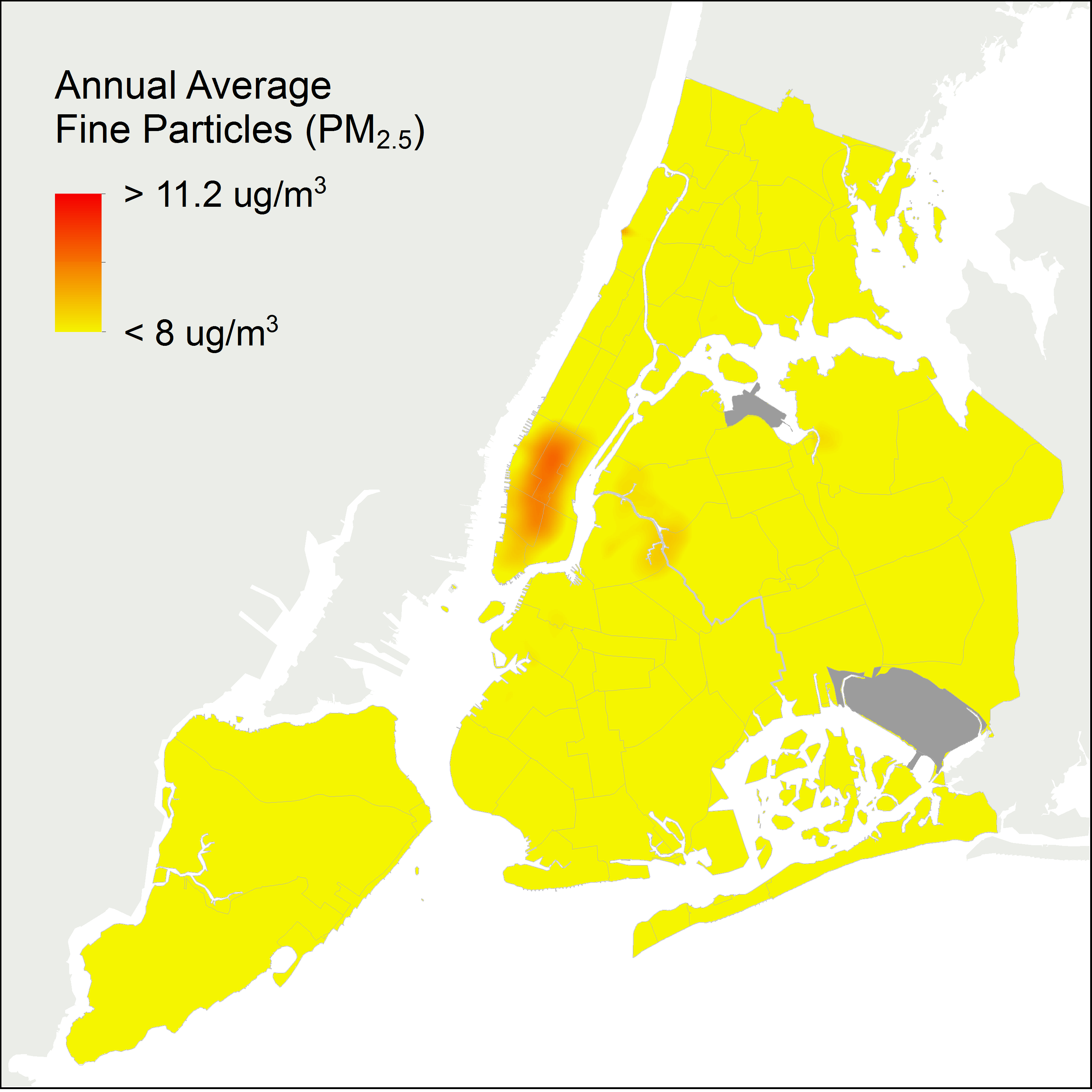To Mark Earth Day Health Department Releases Report on Improvements in Citywide Air Quality
Data from the largest urban air monitoring program of any U.S. city show annual average levels of fine particulate matter (PM 2.5), nitrogen dioxide (NO2) and nitric oxide (NO) have declined 43%, 39% and 56%, respectively since 2009.
In 2020, New York City and surrounding communities implemented measures to slow the spread of COVID-19, resulting in dramatic changes in air pollution in some neighborhoods and smaller changes in others.
April 22, 2022 — The Health Department today released the latest New York City Community Air Survey (NYCCAS) report, which shows continuing improvements in air quality citywide. The report summarizes twelve years of data for the largest ongoing urban air monitoring program of any U.S. city. It describes seasonal trends in air pollution levels from winter 2008-2009 through fall 2020 and highlights sources that contribute to high levels of pollutants in New York City neighborhoods. Maps displaying neighborhood air pollution levels by year are also available online.
“The health of our planet is a critical public health issue for New Yorkers,” said Health Commissioner Dr. Ashwin Vasan. “The choices we make as a global communit2y to combat or perpetuate climate change, show up in our city every day, with deeply unequal impacts. And as a city, we can develop models for the nation to ensure we are breathing cleaner air and launching policies to reduce greenhouse gas emissions, in the effort to slow the warming of our planet. We can all breathe easier when cities commit to fighting climate change and to environmental protection. It saves lives, now and into the future.”
NYC Community Air Survey Findings before, during and after NY PAUSE
- During NY Pause, there was less traffic at bridges and tunnels, shorter travel times on major roadways, and fewer open small businesses, especially in leisure and hospitality.
- Reductions in activity during NY Pause resulted in a 29% decline in NO2 and a 25% decline in PM2.5 from levels during spring 2019.
- Air pollution decreases occurred mostly in Manhattan’s central business district, south of 60th Street. Reductions were smaller in neighborhoods that have the highest rates of air pollution-related Asthma Emergency Department visits.
NYC Community Air Survey Findings Between 2009 and 2020
- Annual average levels of fine particulate matter (PM 2.5), nitrogen dioxide and nitric oxide have declined 43%, 39% and 56%, respectively.
- Summertime average ozone levels have remained stable.
- High levels of fine particulate matter, nitrogen dioxide, and nitric oxide – pollutants that exacerbate heart and respiratory disease – continue to be observed in areas of high traffic density, building density, and industrial areas.
- PM2.5 emissions from buildings have continued to decline, reflecting the impact of city regulation of heating oil. Meanwhile, emissions from commercial cooking - grills and charbroilers in restaurants – now best explain the differences in fine particulate concentrations among neighborhoods. Recent City Air Code updates have created a framework to collaboratively start addressing this emissions source.
More data on local air quality and other health issues related to the environment can be found at the New York City Environment and Health Data Portal.
Annual Average Fine Particulate Matter in NYC, 2009
Annual Average Fine Particulate Matter in NYC, 2020
About the New York City Community Air Survey
The Health Department conducts NYCCAS with Queens College of the City University of New York to evaluate how air quality differs across New York City. Air pollution measurements are taken each season with monitors mounted at street level at about 100 locations throughout the five boroughs. Learn more about NYCCAS.The Health Department prioritizes the reduction of emissions and air quality improvement citywide.
###
#013-22
MEDIA CONTACT : Patrick Gallahue / Michael Lanza,
pressoffice@health.nyc.gov






